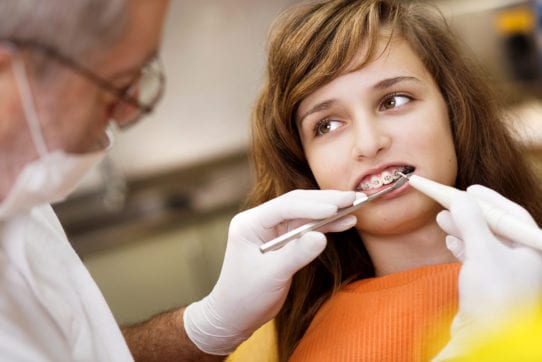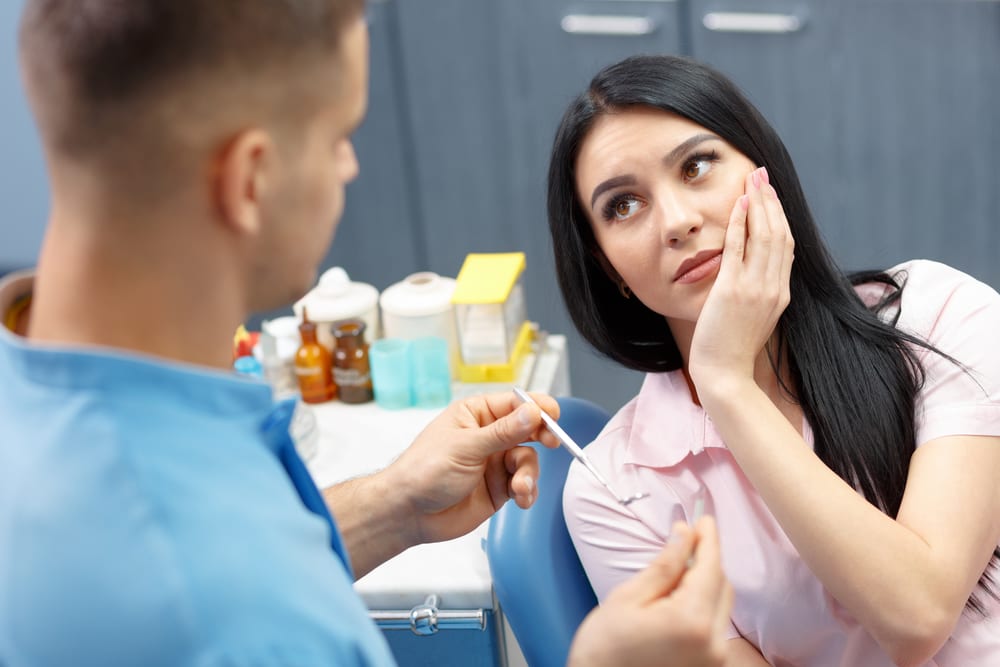
A lot of parents look at their child’s teeth and start to worry about braces? Will my child need them? When is the right time? Is there any way to know?
As your child’s adult teeth start to replace the baby teeth, his or her smile might look like a bit of a mess. This doesn’t always mean he or she will need braces. However, there are some tell-tale signs that can suggest an Clinton, NJ orthodontist may be needed. For example, since most features of the teeth and jaw are inherited, you can sometimes predict based on the parents’ teeth. If one or both of the parents needed braces, there’s a good chance the child will need them too. If your child has an obvious overbite or under bite, this can also be an indicator.
Does your child need a Clinton, NJ orthodontist? Contact us online or call our office at 908-200-7007 to make an appointment at Walnut Pond. We can assess your child’s teeth and help you understand whether braces may be needed to maintain good oral health.
Visit Walnut Pond for an Orthodontic Assessment
When you bring your child to Dr. Carson Ferris-Zeolla or Dr. Victoria Uryniak, we will examine the position of the teeth and the alignment of the lower and upper jaw to determine whether orthodontics are going to be needed for good oral health. Every patient has a unique set of teeth, and the determination is based on several factors.
The great thing about bringing your child in for regular six-month visits is that we are always monitoring your child’s development. At each routine visit we look at current and prior x-rays and assess the position of new and erupting teeth. When we find concerns, we always discuss them with the parents. We will let you know when and if we determine orthodontics will be needed.
Are Braces Always Necessary?
Some parents, understandably, want to spare their child the inconvenience of braces. A unique and crooked grin can be charming, right? It’s true that teeth don’t need to look perfect to be healthy—but crowded or overlapping teeth can be a detriment to long-term oral health. You can rest assured that we never recommend children get braces for cosmetic reasons. If your dentist suggests braces, it’s always to preserve the health of the teeth and gums, and to prevent damaging conditions from developing in the future.
How do crooked teeth lead to problems? For starters, teeth that overlap or sit at odd angles are harder to clean. The more inaccessible spaces there are, the more likely your child will develop tooth decay between teeth or at the gum line. Beyond the hygiene issue, problems with bite alignment (how the upper arch and lower arch fit together) can lead to teeth that are more likely to get worn down or cracked, or develop TMJ disorder.
With improper bite alignment (overbite, under bite, or cross bite), patients are more vulnerable to developing an imbalance in the function of the temporomandibular joints. When the teeth don’t fit together properly, it changes the way you use your jaw. Ultimately, this can make speaking, chewing and even breathing more difficult.
TMJ disorder is best known as the cause behind a popping, clicking, or shifting jaw, but it also can lead to chronic muscle fatigue and pain in the face, neck, and head. Such stress in the jaw joints can also lead to teeth grinding (bruxism) which causes structural damage to the teeth. There is even some scientific evidence now to suggest that obstructive sleep apnea (OSA) is connected to bite alignment. For example, many patients can correct their sleep breathing disorder with an oral appliance that opens the airway by shifting the position of the lower jaw.
What is the Right Age for Braces?
Since children’s teeth come in on varying timelines, the best age for braces may be different for each child. (It’s the same with having wisdom teeth extracted.) Typically, most of the adult teeth will come in somewhere between ages 9 and 12. Ideally, braces are best placed when a child’s jaw is still growing, as it’s easier to move teeth into proper position as they are coming in, as opposed to after. In some cases, earlier orthodontic intervention between the ages of 7 and 9 can make the treatment timeline more effective (and shorter).
Can My Child Get Invisalign?
Invisalign is a great alternative to traditional braces for teens and adults—but it’s not recommended for children. The face and jaw need to be finished growing before Invisalign treatment can be considered, and, even then, it has its limitations. Invisalign may be the preferred treatment for patients with mild-to-moderate crowding or misalignment, but it cannot correct severe cases of malocclusion. Invisalign cannot correct bite issues, nor can it rotate or shift teeth that need to be moved vertically.
If your child’s issues fall into the mild category, you may want to wait until he or she is a bit older (14-16, usually) to try Invisalign. In the interim, take the time to learn about the lifestyle changes required of Invisalign treatment, as they are considerable. It requires a high level of compliance and a great deal of vigilance with designated meal times and oral hygiene.
If you need a Clinton, NJ orthodontist, contact us online or call our office at 908-200-7007.






